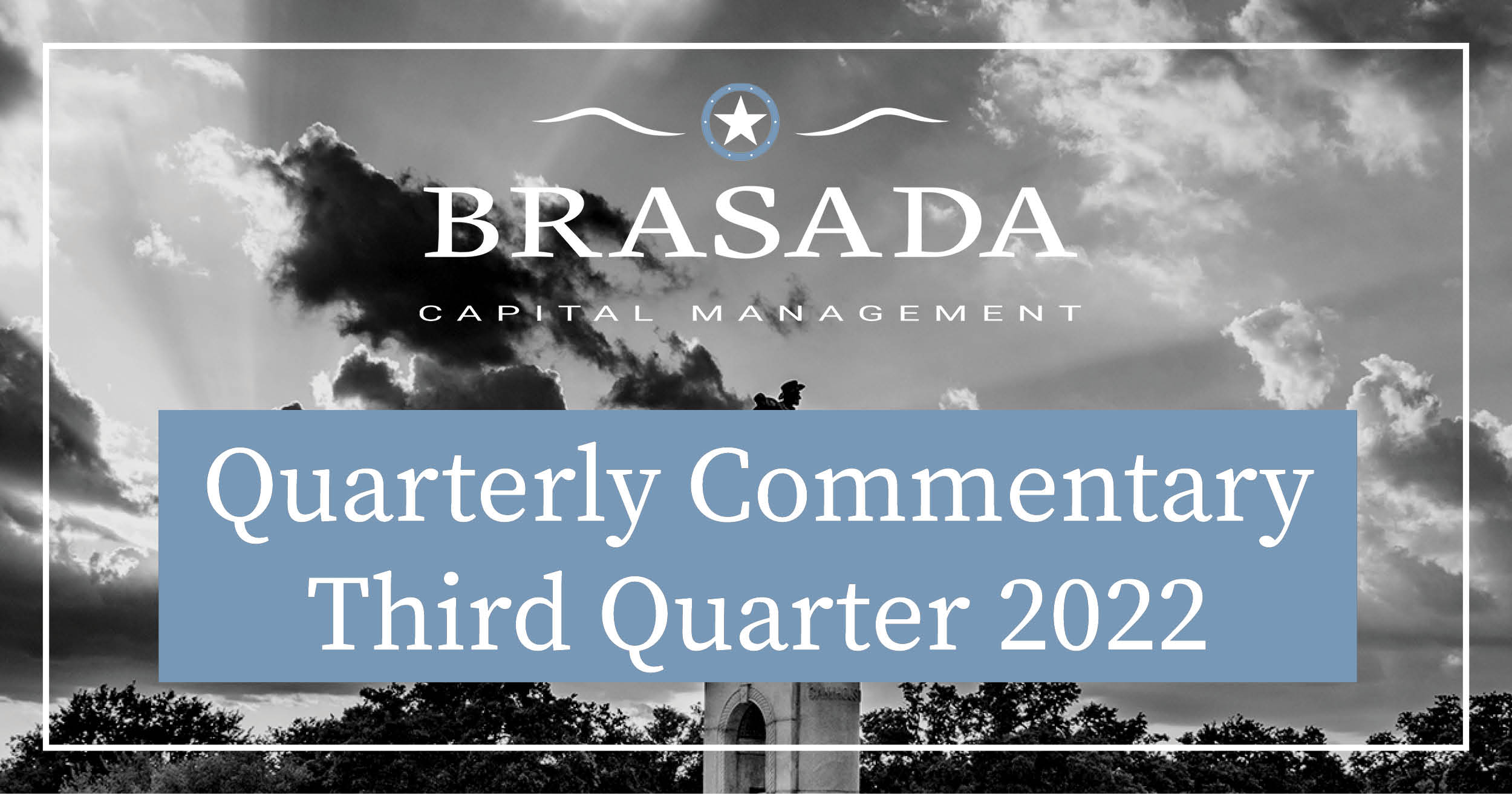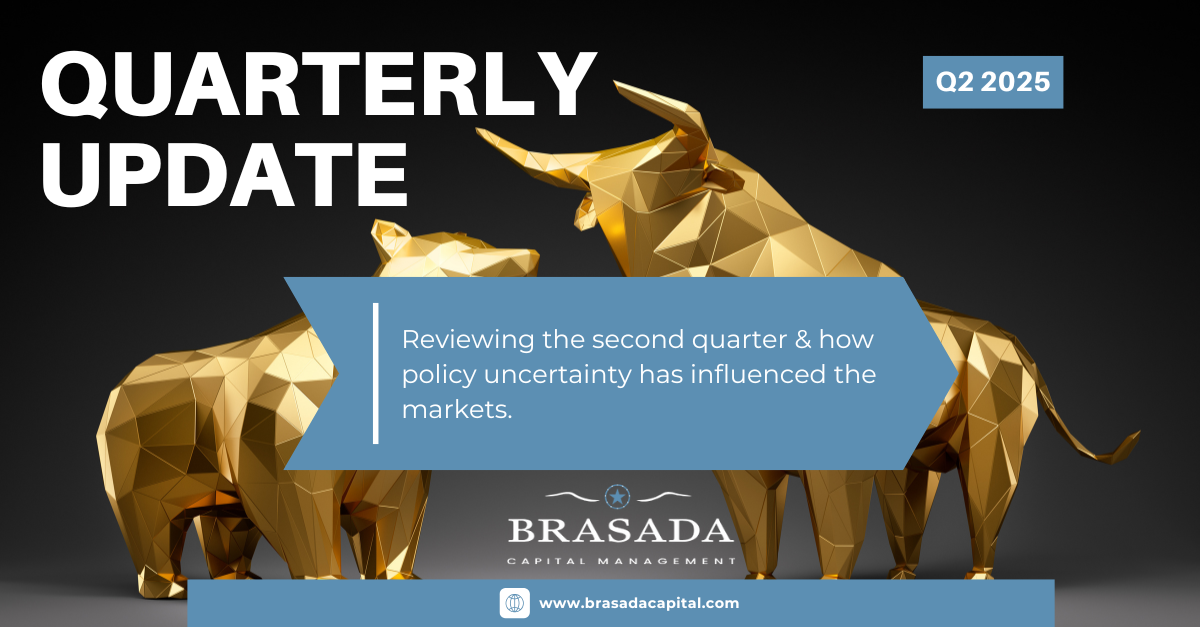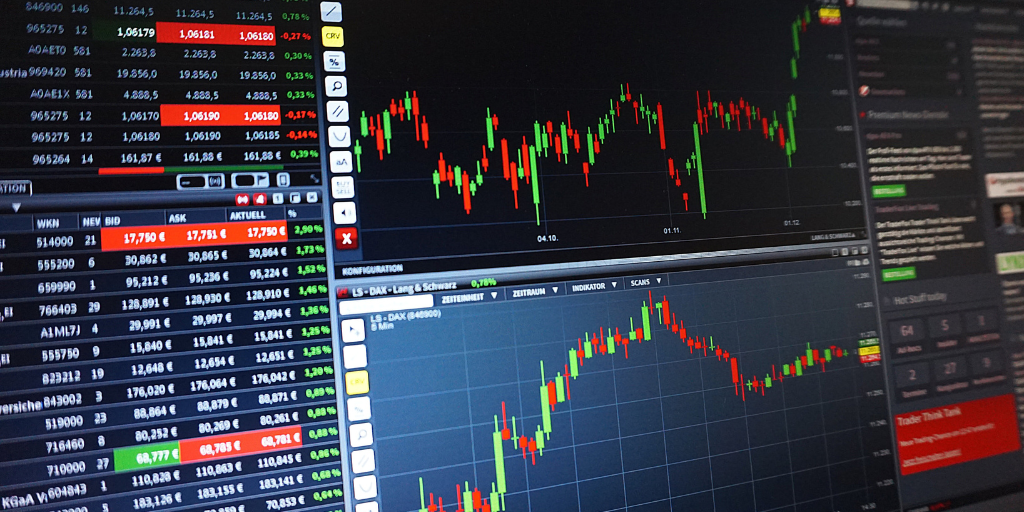Second Quarter of 2025
“Far more money has been lost by investors preparing for corrections or trying to anticipate corrections than has been lost in corrections...
6 min read
 Mark McMeans, CFA
:
Sep 30, 2022 5:23:00 PM
Mark McMeans, CFA
:
Sep 30, 2022 5:23:00 PM

Please save the date for our annual clients and friends dinner which will held at the Briar Club in Houston on March 30, 2023. Thankfully, we will be back to having an in-person keynote speaker. We’d love to see you there as it’s always a great time, but for those who can’t attend, know that we do plan to livestream the event.
The first nine months of ’22 have witnessed a nasty bear market as the world’s central banks have aggressively moved to hike interest rates and withdraw liquidity to combat inflation. Almost nothing has been spared in this historic repricing of the major asset classes to lower levels. The S&P 500 Index has fallen just under 24% in 2022, for its fourth-worst showing in the first nine months of any year since the index’s inception. The Russell 2000 Index is not far behind at a 25% loss, and the NASDAQ Index is down 32% year-to-date. Historically when stocks have had significant drawdowns, bonds have been a haven, but that isn’t the case so far this year. The Barclay’s Aggregate Bond Index has lost 15.6%, which is its worst showing in the first nine months of any year by far. To illustrate the point on how unusual these moves are, we had to go all the way back to 1931 to find a larger loss at this point in a year for a traditional “balanced” portfolio of 60% stocks, as measured by the S&P 500 Index, and 40% bonds, as measured by the Barclay’s Aggregate Bond Index. Stocks and bonds are both down for each of the three first quarters of the year, the first time this has happened in three consecutive quarters in just under 50 years.
Speculative assets that most benefited from the previous years’ abundance of easy money have been hit hardest with Bitcoin and MEME Stocks (as defined by the MEME exchange traded fund) both down 57%, Special Purpose Acquisition Companies (SPAC’s) down 65%, and stocks of unprofitable companies with futuristic business models (as defined by the ARKK exchange traded fund) down 60%. These losses are all in the first nine months of this year. We of course have no investments in these areas.
As we’ve said in our previous communications, it was unsettling to us how much money was being printed, how much was being spent by governments, and how longer-term interest rates were being artificially suppressed. Also contributing to the highest inflation levels seen in four decades were the challenges from supply chains still healing from pandemic shutdowns and Russia’s invasion of Ukraine. Years of underinvestment in housing, energy production, structural labor shortages and additional Covid lockdowns in China haven’t helped either.
So far in ’22 the economy has muddled along, avoiding a recession, while corporate profits have actually grown. The sell-off then has to do with the market pricing in a future recession, as central banks aggressively work to slow the economy so that the supply side can catch up. In the US, the Federal Reserve has lifted interest rates five times this year, including three unusually large three-quarter point increases. Two more increases are expected between now and year-end, including another three-quarter point hike in the November meeting. Also weighing on sentiment are a surging US dollar, a substantial decrease in money supply growth, and worries over a deceleration in future corporate earnings from tightening monetary conditions. The Fed has also started to slowly unwind its massive balance sheet, which grew earlier in the year to $9 trillion.
Public enemy number one behind the sell-off is inflation and the Fed has made no secret of its intent to squash it, even if doing so causes the economy to go into a recession. It’s important to understand the headline inflation numbers that make their way into the press are mainly lagging indicators. As investors, we care much more about what future inflation holds, and we believe there are numerous signs of inflation coming down from these high levels. This will significantly help future sentiment. For example, in the last report on the Consumer Price Index (CPI), which was issued in the month of September for data as of the end of August, the Bureau of Labor Statistics showed that the CPI from the previous 12 months had risen 8.3%. In the US, we’ve enjoyed stable inflation for the last four decades and this is truly an awful number. Within this number, however, was eleven months of data that we already knew. What was incremental was that inflation for the single month of August only rose 0.1%, and that was the most important number in that release to us. +8.3% made headlines, but that was a very different number than what was most relevant.
There are numerous signs of inflation coming down and, in some areas, outright disinflation. Retailers have excess inventories that need to be cleared, shipping rates are normalizing, and the ports are no longer clogged. Commodity prices have fallen. Lumber, for example, is down 70% from its peak and is back to pre-Covid levels. Inventories of new cars are rebuilding as the chip shortage abates and that will flow through to relief for used car prices.
The bond market has been a great predictor of future inflation. The news here is good as break-evens have been falling in the last several months. These are the yields on Treasury Notes or Bills less the yield on the same maturities for Treasury Inflation Protected Securities (TIPS). The yield difference between the two is the bond markets’ expectation for future inflation and the falling trendline from the March, 2022 peak is a very promising signal:


It’s never any fun going through a downturn of this magnitude, but it does create opportunities. For the first time since we started the firm in 2008, we’re able to have conversations with many of you about the values we’re seeing in both municipal and corporate bonds. The same can be said of our Preferred Income strategy which has had a selloff similar to stocks. This strategy has recently been revamped to be more diversified across all sectors, and if we’re right that inflation and rates are peaking, should prove beneficial with a yield in excess of 6%. Please talk to your Brasada representative if we are unaware of changes in your life or your risk tolerance, to make sure that your objectives match our strategies.
With respect to the correction in equities, we expect to see rallies on news of economic weakness and further pressure on signs of economic strength, as the market anticipates how much medicine the Fed will be dosing to the patient. The correction we’ve witnessed already this year is about in line with the average pullback during a recession. In the modern era, there have been five pullbacks of at least 20% in the first nine months of a year, and in only one of those instances was the market down in the fourth quarter. TheUS will have elections next month and in the last 80 years of midterms, the stock market has had a positive return in the succeeding 12 months each time.
Our estimated composite returns through Sept 30th have reflected the weakness in the capital markets, especially with regard to growth strategies. We do take solace in our very long track records as past clearing events have created a reset for future years.
As you know, the portfolios we build for you are customized, so your experience will typically be different than the composite averages. Bond portfolios also lost value on the year as interest rates rose. The good news on the bond side is that we will be able to reinvest will higher yields when your bond maturities are put to work.
I am pleased to let you know that we recently added a new employee to help strengthen our analyst team. Ed Zhang joined us from HP, where he worked with the top brass there on corporate strategy. He previously held a number of roles in different industries including oil & gas. He has an engineering degree from Texas Tech and an MBA from U of H. Ed has long had a hobby of compiling his own stock research reports, and I’m glad that we’ve beefed up our investment team even during a downturn.
We appreciate the confidence you have placed in us and wish you the best.
Sincerely,
Mark E. McMeans, CFA
This quarterly update is being furnished by Brasada Capital Management, LP (“Brasada”) on a confidential basis and is intended solely for the use of the person to whom it is provided. It may not be modified, reproduced or redistributed in whole or in part without the prior written consent of Brasada. This document does not constitute an offer, solicitation or recommendation to sell or an offer to buy any securities, investment products or investment advisory services or to participate in any trading strategy.
The net performance results are stated net of all management fees and expenses and are estimated and unaudited. These returns reflect the reinvestment of any dividends and interest and include returns on any uninvested cash. In addition to management fees, the managed accounts will also bear its share of expenses and fees charged by underlying investments. The fees deducted herein represent the highest fee incurred by any managed account during the relevant period. Past performance is no guarantee of future results. Certain market and economic events having a positive impact on performance may not repeat themselves. The actual performance results experienced by an investor may vary significantly from the results shown or contemplated for a number of reasons, including, without limitation, changes in economic and market conditions.
References to indices or benchmarks are for informational and general comparative purposes only. There are significant differences between such indices and the investment program of the managed accounts. The managed accounts do not necessarily invest in all or any significant portion of the securities, industries or strategies represented by such indices and performance calculation may not be entirely comparable. Indices are unmanaged and have no fees or expenses. An investment cannot be made directly in an index and such index may reinvest dividends and income. References to indices do not suggest that the managed accounts will, or is likely to achieve returns, volatility or other results similar to such indices. Accordingly, comparing results shown to those of an index or
benchmark are subject to inherent limitations and may be of limited use.
Certain information contained herein constitutes forward looking statements and projections that are based on the current beliefs and assumptions of Brasada and on information currently available that Brasada believes to be reasonable. However, such statements necessarily involve risks, uncertainties and assumptions, and prospective investors may not put undue reliance on any of these statements. Due to various risks and uncertainties, actual events or results or the actual performance of any entity or transaction may differ materially from those reflected or contemplated in such forward-looking statements. The information contained herein is believed to be reliable but no representation, warranty or undertaking, expressed or implied, is given to the accuracy or completeness of such information by Brasada.

“Far more money has been lost by investors preparing for corrections or trying to anticipate corrections than has been lost in corrections...

UNDERSTANDING TARIFFS: ECONOMIC IMPACT, RATIONALE AND CONTROVERSIES

Market Selloff Dear Clients and Friends, Thursday and Friday marked the 4th time in the last 50 years when the S&P 500 had a 2-day drop of over...